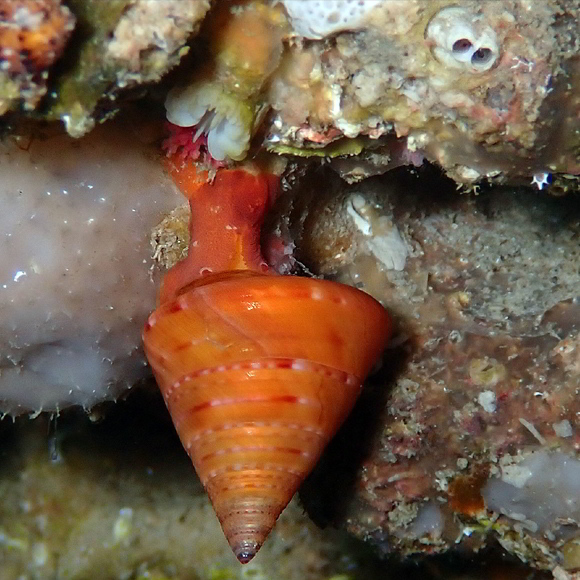
W. Brittany to Canarias, Azores and Madeira to Mediterranean. Predator on sessile preys, chiefly cnidarians. Lives on rocky bottoms, from subtidal grounds to shallow shelf.
Basionym: Trochus conulus.
Calanque de Saména, south of Marseille, Provence, S. France. Notice the twin siphons of a Rocellaria dubia (Pennant, 1777) nested in the rock, at right, on top of the image. Original picture provided by slebris for iNaturalist – (CC BY-NC).
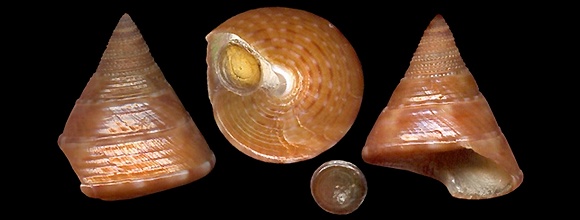
70-80m deep, off Málaga, Andalucia, S. Spain. 14mm.
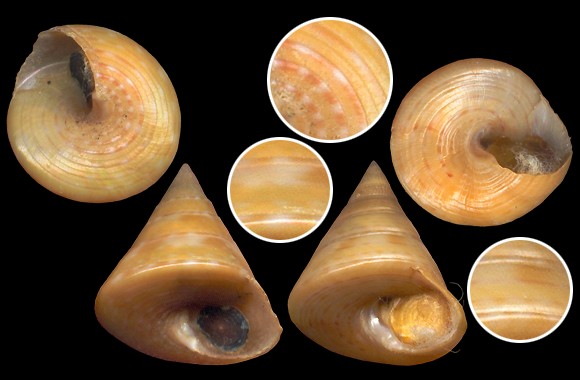
Variations affect the shape (angular to rounded base), the colour (green to golden orange), the sculpture. Always traces of a marbled pattern. 150-180m deep, Capraia island, Livorno, Toscana, W. Italy. 18-18mm.
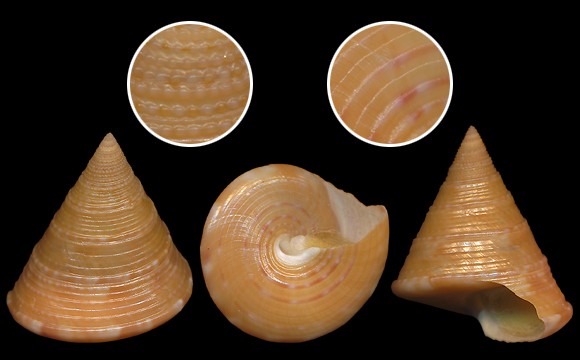
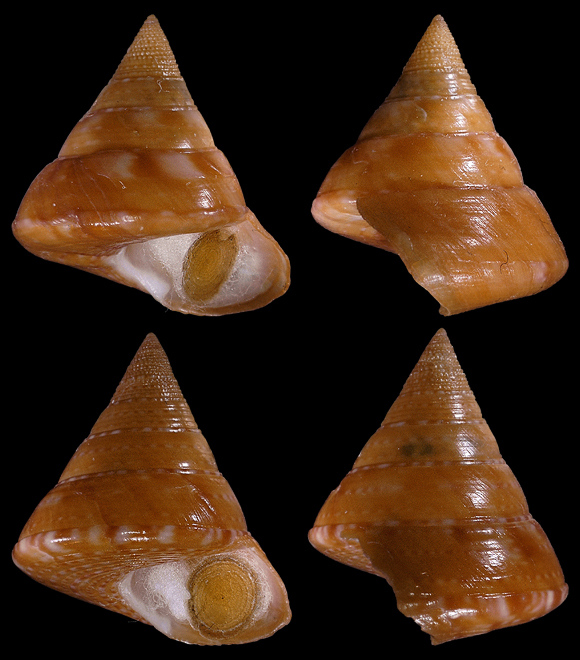
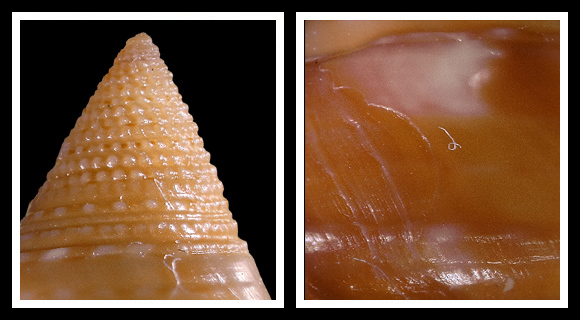
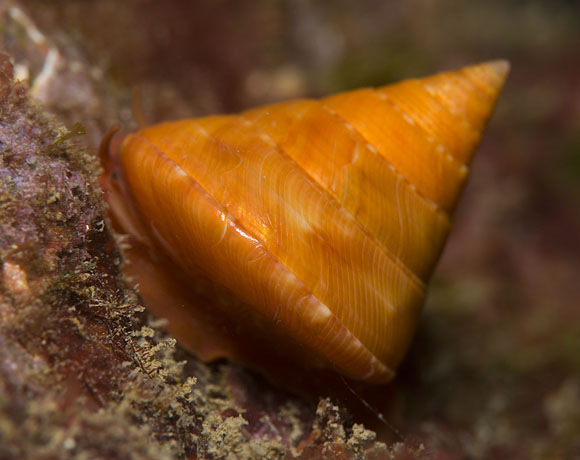
At the periphery, the sutural bead shows an alternance of white and dark orange dots; this feature, and the less contrasted and more blurred radial pattern, make the difference with laugieri.
Live specimen on a rock, Costa Brava, E. Spain.
Image provided by Jordi Regàs (ES).
– (CC BY-NC-SA) –